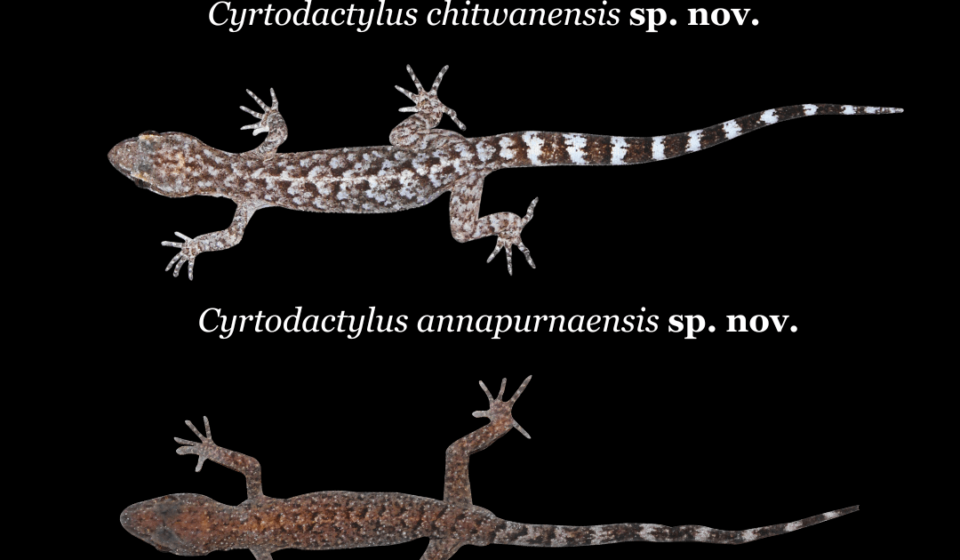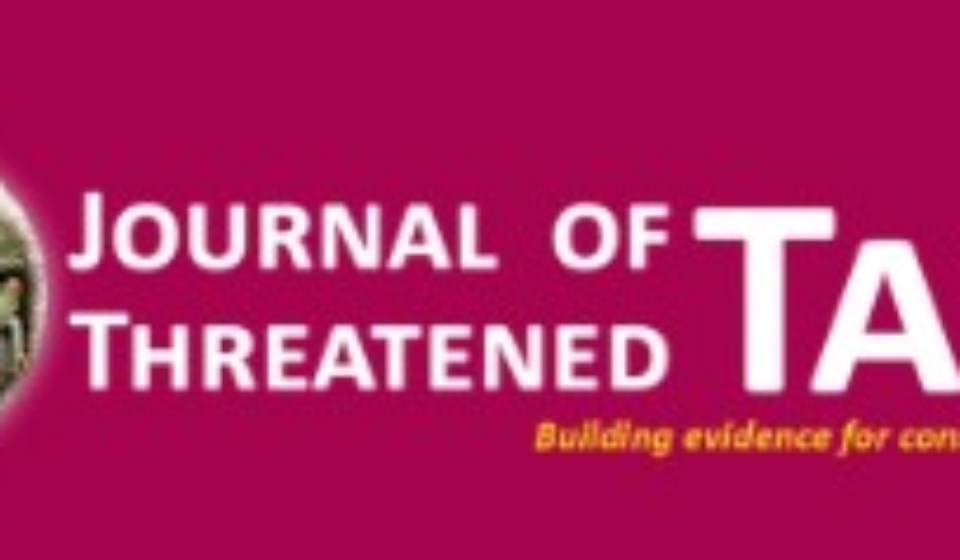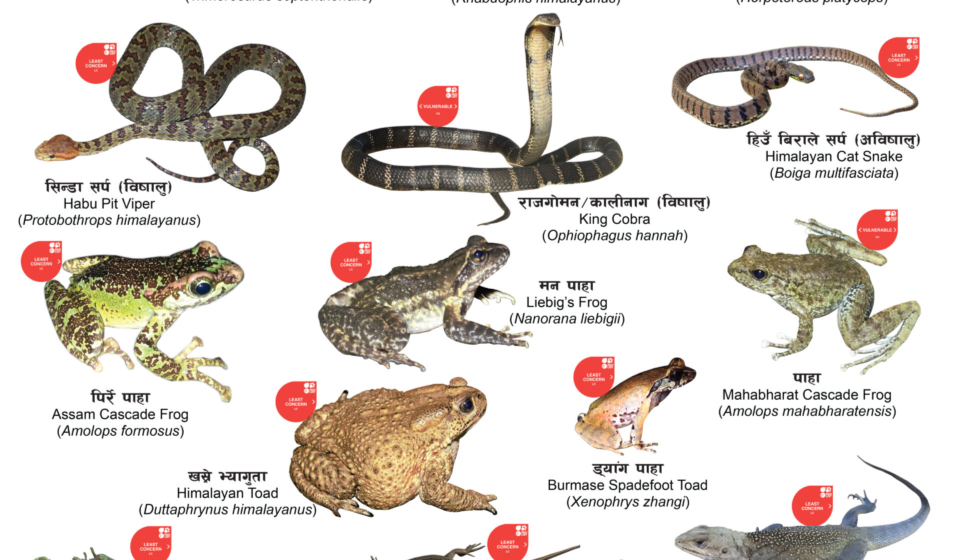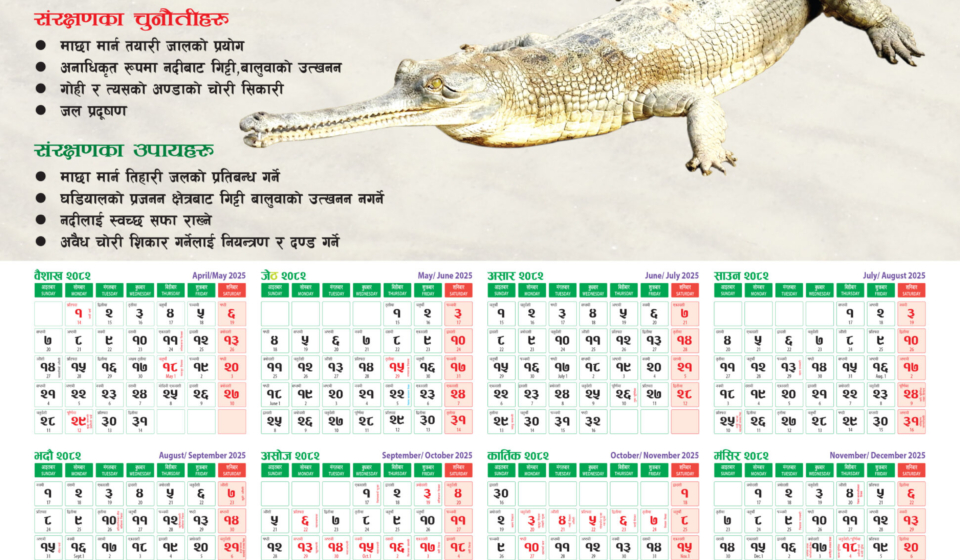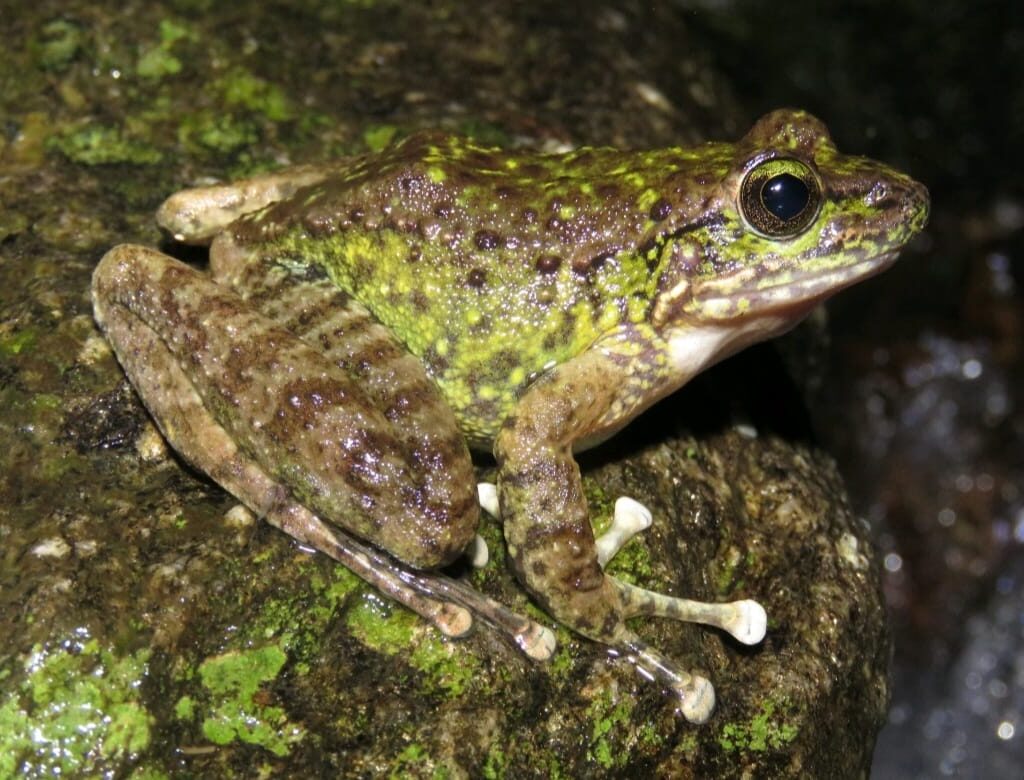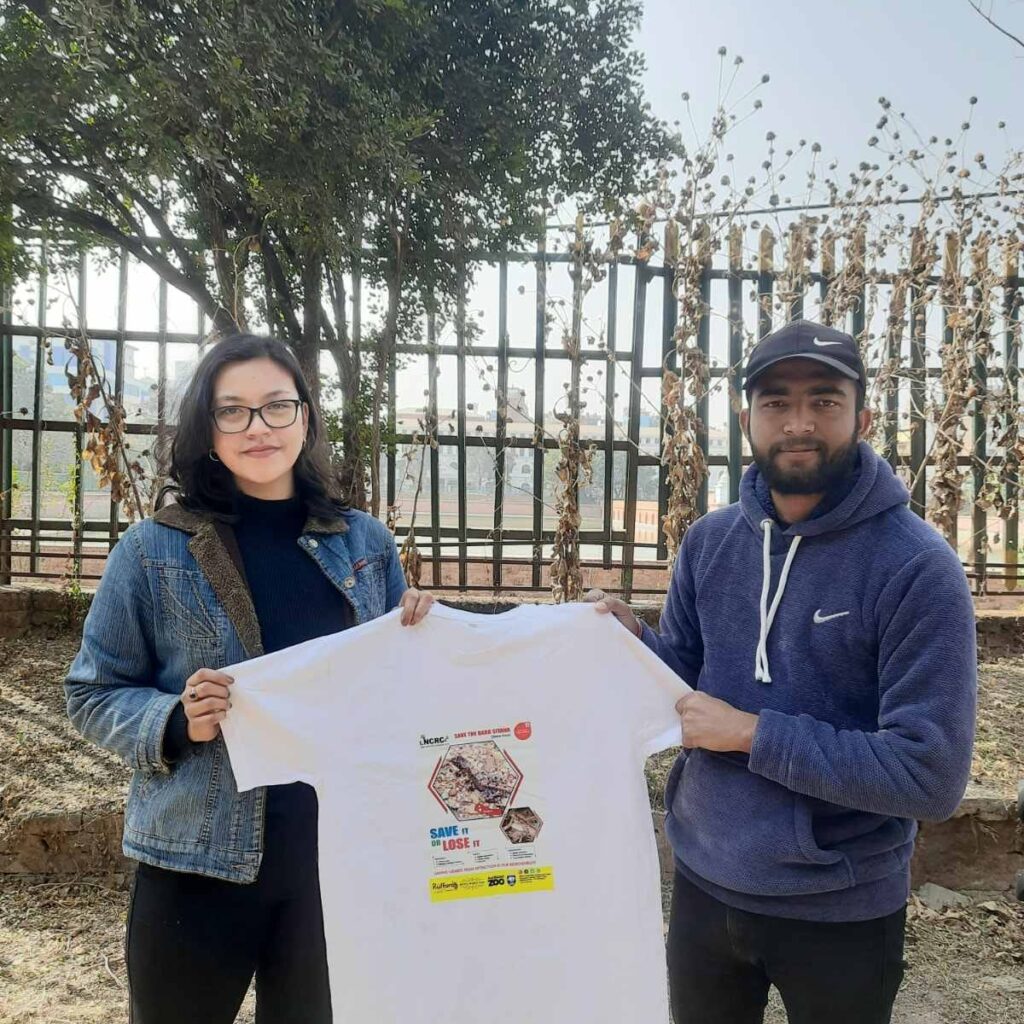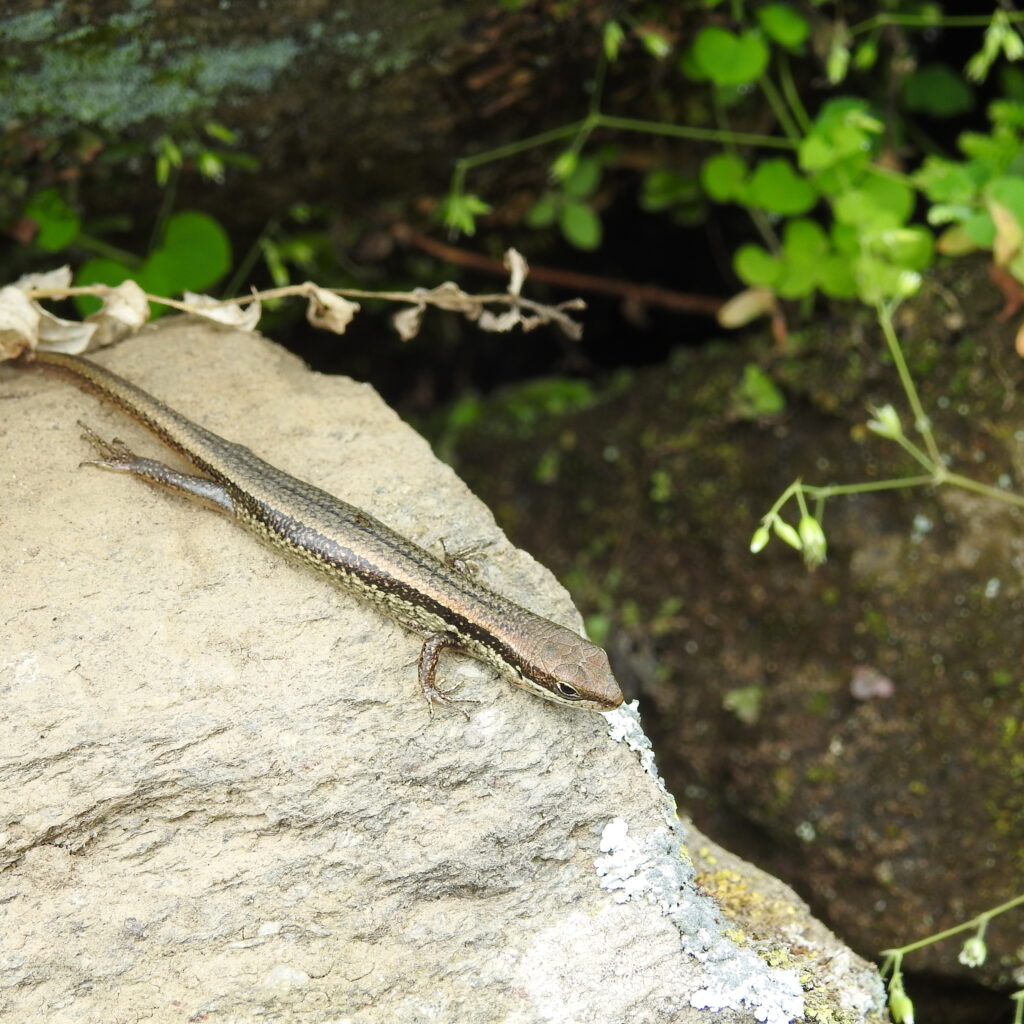Authors: Santosh Bhattarai, Bishal Prasad Neupane

The Dark Sitana (Sitana fusca) is an agamid lizard endemic to Nepal, only known from its type locality in Madhesh province. Due to increased habitat loss, forest fragmentation, and urbanisation in its type locality, this species is now ‘critically endangered’. There is also very limited
information on its ecology and distribution. To help this, the Nepal Conservation and Research Center
(NCRC), with support from The Rufford Foundation, Auckland Zoo, and Katie Adamson Conservation Fund, initiated a research and conservation project focusing on the Dark Sitana. Outreach and community engagement programmes, conducted jointly by NCRC and the Mithila Wildlife Trust, were also major components of this project. During these sessions, we taught students in ten schools and in three peri-forest communities (communities that live immediately adjacent to the forests, and are dependent on forest resources). A total of 671 students (268 boys and 403 girls) and 71 community members attended our sessions, wherein a ‘conservation poster’ of the Dark Sitana was also distributed. As a result of our outreach programmes, people, who previously had negative perceptions about this species, understood that these lizards are an important component of their ecosystem, and that they do not harm humans (in many Nepalese societies, lizards are considered to be relatives of snakes and deadly venomous; folklores also portray these reptiles to be lazy and dishonest).

Some of the peri-forest community members also promised to inform us whenever they spotted the
species to help understand its distribution better.
We found that our sessions were well-received among students and community members. Word spread and we started receiving invitations from several other schools for outreach sessions and requests for printed copies of the poster. Such interest and enthusiasm makes us look forward to conducting such sessions more often, including during Nepal’s national wildlife week, in collaborations with other organizations on ground. After all, the goal is to share knowledge and develop sustainable conservation measures for the Dark Sitana in Nepal.




![Nepal[1]](https://ncrc.com.np/wp-content/uploads/2025/11/Nepal1-960x560.png)
